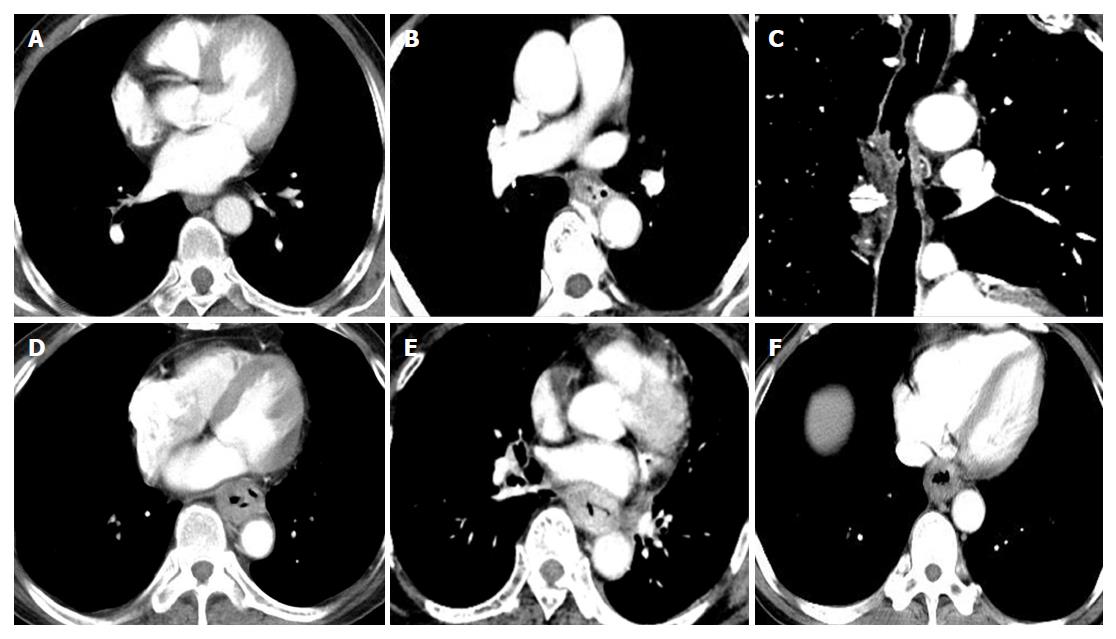Copyright
©The Author(s) 2018.
World J Gastroenterol. Sep 28, 2018; 24(36): 4197-4207
Published online Sep 28, 2018. doi: 10.3748/wjg.v24.i36.4197
Published online Sep 28, 2018. doi: 10.3748/wjg.v24.i36.4197
Figure 4 Typical cases between T1/2 and T3 stages of esophageal squamous cell carcinoma in group A, B and C.
A: An axial image obtained via 120 kVp combined with FBP reconstruction of a 56-year old patient shows unlayered enhanced wall thickening at the lower esophagus with histopathological T2N0M0. B: A 62-year old, correctly-staged patient with histopathological T2N0M0ESCC of the middle esophagus. The axial image at 50 KeV obtained by GSI assist depicts significantly layered enhanced wall thickening, which was regarded as invasion within the submucosal or muscle layer. C: A 58-year old patient with histopathological T2N0M0; sagittal reformatted image obtained via EICT combined with GSI assist at 50 KeV shows slightly mucosal enhanced wall thickening with an ulcer on the surface. D: An axial image obtained via 120 kVp combined with FBP reconstruction of a 59-year old patient shows unlayered enhanced wall thickening at the lower esophagus with histopathological T3N1M0. E: A 55-year old patient with T3N0M0; axial image obtained using GSI assist at 50 KeV shows more obvious enhanced wall thickening than the image obtained by conventional 120 kVp. F: A 61-year old patient with T3N0M0; EICT combined with GSI assist exhibits unlayered enhanced esophageal wall thickening surrounding the air-filled lumen. EICT: Esophageal insufflation computed tomography; ESCC: Esophageal squamous cell carcinoma.
- Citation: Zhou Y, Liu D, Hou P, Zha KJ, Wang F, Zhou K, He W, Gao JB. Low-dose spectral insufflation computed tomography protocol preoperatively optimized for T stage esophageal cancer - preliminary research experience. World J Gastroenterol 2018; 24(36): 4197-4207
- URL: https://www.wjgnet.com/1007-9327/full/v24/i36/4197.htm
- DOI: https://dx.doi.org/10.3748/wjg.v24.i36.4197









